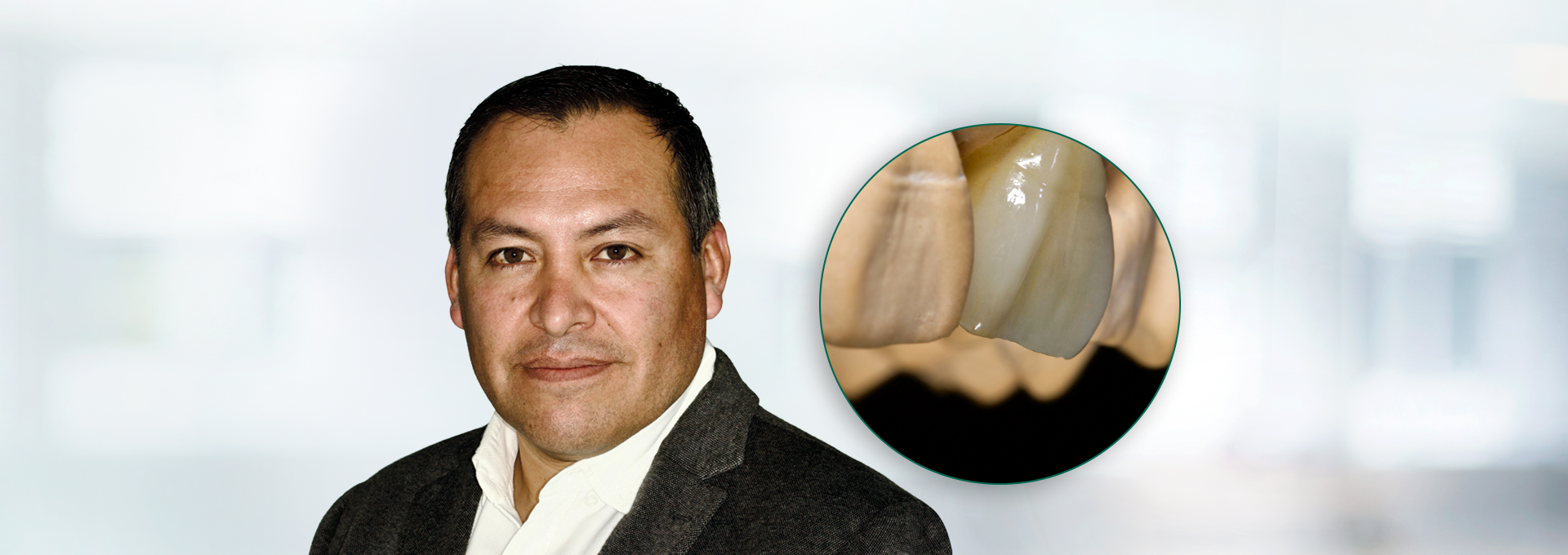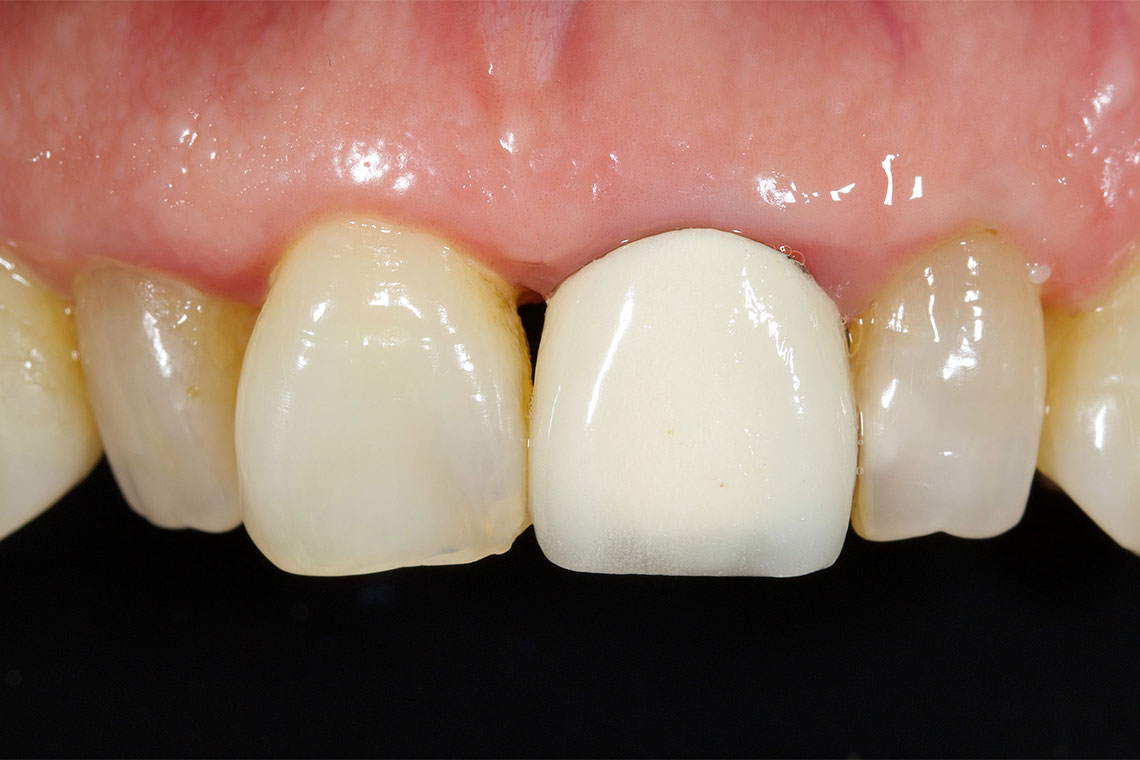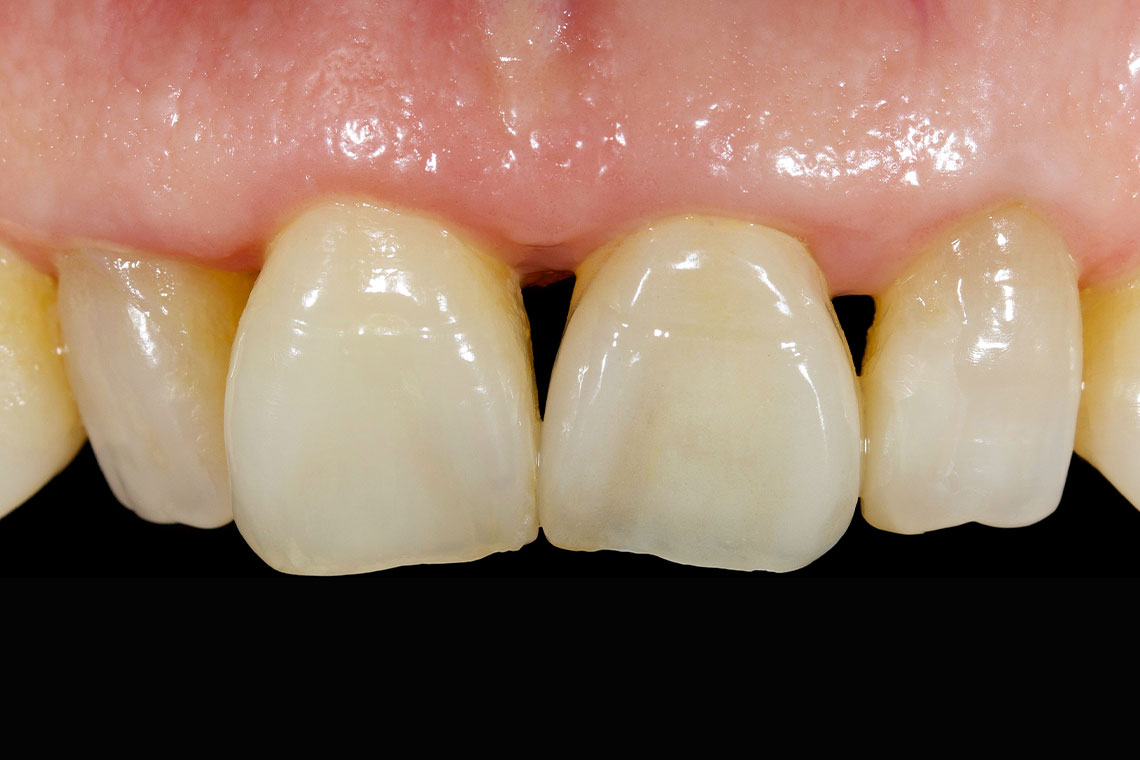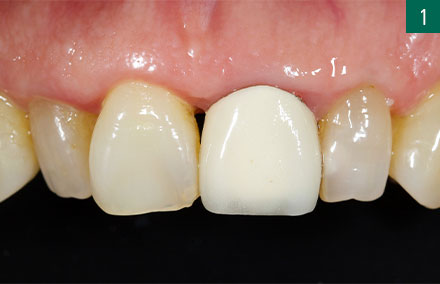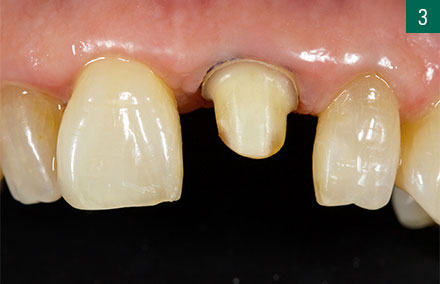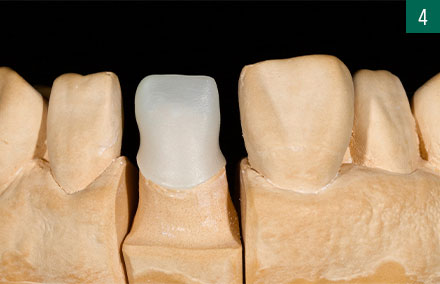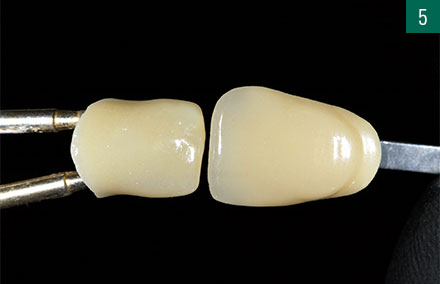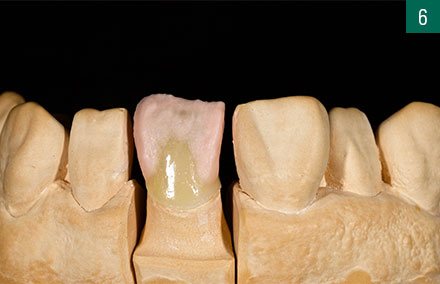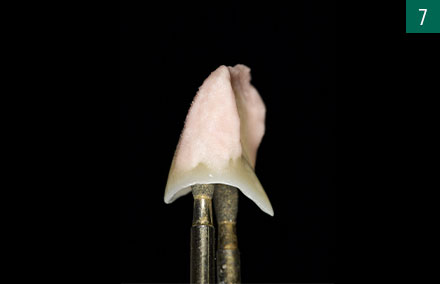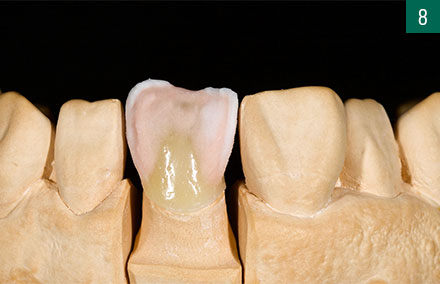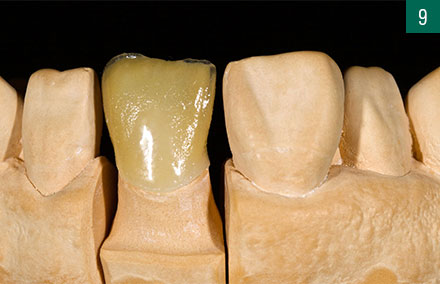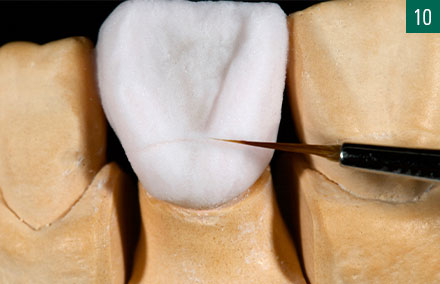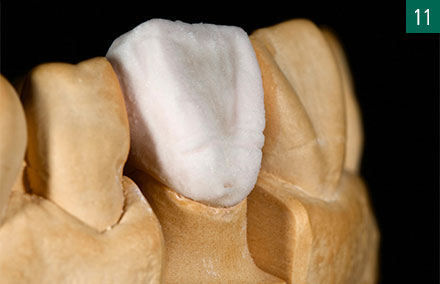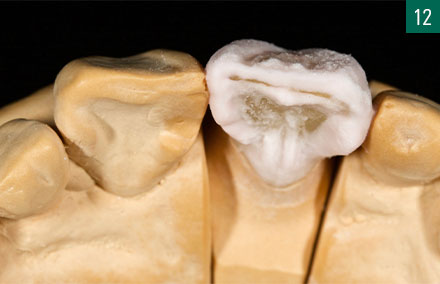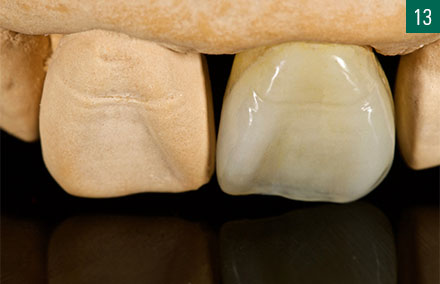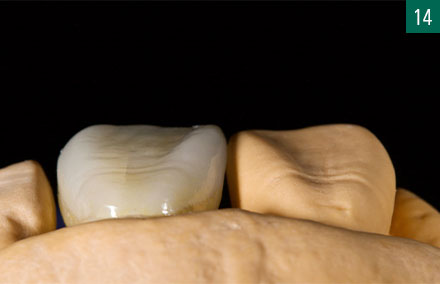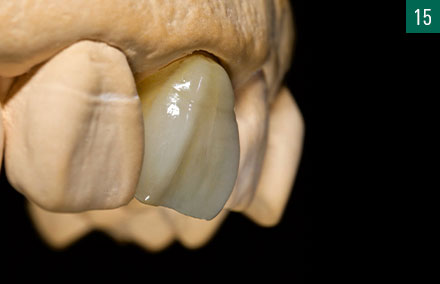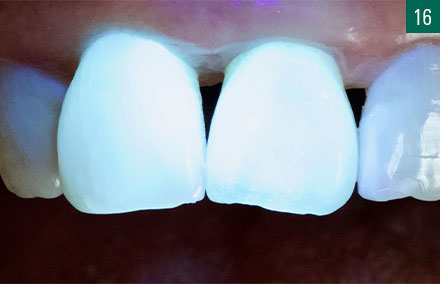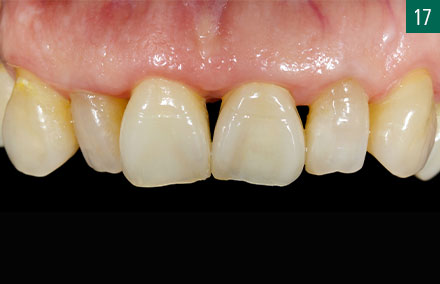What challenges do you see with regard to ceramic veneers in your daily laboratory practice, and how does VITA LUMEX AC help you to meet these challenges?
The challenge I face every day is developing a layering protocol; in other words, knowing what material belongs where and finding the right structural order. In addition, the correct dimensioning in depth and on the surface is also crucial. Thanks to VITA LUMEX AC, the basic tooth shade itself isn't complex at all, since the veneering ceramic offers absolute shade stability and is precisely adapted to the VITA shade standards. This means that if I detect the shade A2 using the VITA shade guide, I will get exactly this original VITA A2 with VITA LUMEX AC. Another benefit for most users is the freedom to choose between both shade standards VITA classical A1-D4 and VITA SYSTEM 3D-MASTER. When determining the tooth shade, I also always work in combination with the VITA Easyshade V spectrophotometer. Digital shade determination is highly precise and incredibly simple to use.
How would you describe your layering protocol with VITA LUMEX AC? Do you have a general approach in this regard?
VITA LUMEX AC basically provides the shade for conventional layering using OPAQUE DENTINE, DENTINE and ENAMEL with absolute precision. Effect materials are used to provide individual characterization. However, to prevent deviations from occurring, usage should be controlled rather than excessive. This is ultimately the only thing that users can control in terms of shade effect. I have created a guide for everyday work that enables me to use a balance between translucent ENAMEL clear and masking OPAQUE DENTINE. Using these two materials, I can control translucency and establish the required translucency gradient. Interestingly enough, I have realized that the degree of opacity of VITA LUMEX AC materials directly correlates with the amount of fluorescence. That's why, using the shade guide that I developed myself, it is also possible to determine different degrees of fluorescence and to set these accordingly.
You previously used VITA VM 9 for veneering. What was it like switching to VITA LUMEX AC? How are you able to control effects and translucency?
Not a lot has really changed in terms of handling. In terms of the veneering concept, VITA LUMEX AC works with OPAQUE DENTINE, marking a return to familiar approaches. The VM 9 veneering system, on the other hand, uses BASE DENTINE. It didn't take me long to get used to the small number of nuances that were new with VITA LUMEX AC. I now also can use VITA LUMEX AC to create the veneer that I used to fabricate using VITA VM9. The veneering ceramic offers special effect materials, along with the ability to create custom shade effects by mixing them with the VITA AKZENT Plus stains. A natural and lifelike effect largely depends on the degree of translucency. The translucency can be intensified in combination with ENAMEL clear. In this way, users are not restricted in how they simulate tooth substance to create vitality.
What properties does VITA LUMEX AC veneering ceramic offer for modelling? How stable are the results when it comes to firing?
I had VITA LUMEX AC under control right from the start. Anybody with a little experience can handle this creamy, yet more granular veneering ceramic. Yet veneering with VITA LUMEX AC is not difficult; I can achieve the same effects as I previously did with VITA VM 9. Modelling is the result of the interplay between different modelling liquids, ceramic materials and the skill of the user. For the right consistency, I also use a little VITA INTERNO modelling liquid, which is why I need to extend the pre-drying time accordingly. Generally, the veneering ceramic is very stable. Once placed, small portions remain in situ without mixing inadvertently. With targeted pressure using the brush, a portion of ceramic can be subsequently modified at any time. So it's easy to get used to this veneering ceramic quickly, without the end result being compromised.

